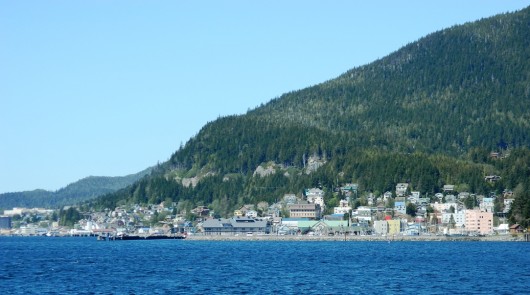 A compliance order from the state Department of Environmental Conservation spells out what the City of Ketchikan is required to do over the next couple of years to address ongoing water concerns.
A compliance order from the state Department of Environmental Conservation spells out what the City of Ketchikan is required to do over the next couple of years to address ongoing water concerns.
The compliance order calls for Ketchikan to finish research into options for dealing with the source of the city’s water, and submit engineering design plans for any needed upgrades by the end of 2015.
The city also must continue plans to upgrade its new water treatment plant and start testing for the waterborne parasite Cryptosporidium – something it’s not tested for previously.
All this is expected to cost between $1.75 and $2.25 million. The city does have about $1.8 million left from a low-interest state loan that paid for construction of the new treatment plant. That is a loan, though, so it will have to be paid back over time.
John Kleinegger, water division manager for the city-owned Ketchikan Public Utilities, explained that “KPU issues the bond and the state makes a guarantee, so the financing would come from the revenue of KPU – Electric, telephone and water combined.”
That means the loan will be paid for by KPU customers.
While the loan would cover the low end of the estimate, it’s likely that the overall cost of the compliance order will exceed that amount. City Manager Karl Amylon writes in a memo that additional costs could be covered by KPU reserves.
Ketchikan’s water supply has been problematic in recent years for a couple of reasons.
First: Ketchikan Lakes, which is the source of the city’s drinking water, has higher-than-allowed levels of coliform bacteria. The water is disinfected before it’s distributed, but the federal Environmental Protection Agency still regulates coliform levels in the source water.
Kleinegger said it might be possible to resolve that issue through the city’s ultraviolet radiation treatment system. The city’s new treatment plant combines chemical and UV disinfection. Kleinegger cited a similar system in the Seattle area.
“This is the Cedar River treatment plant, where, like us, they do have higher than acceptable levels of coliform,” he said. “But they were also able to demonstrate to their regulatory agencies that by providing more UV disinfection than is technically required, they were able to achieve a waiver.”
Ketchikan also will investigate taking water from different locations in the lake.
The second problem is that the city’s water supply has a lot of organic material floating in it, and when that material comes in contact with chlorine disinfection, it forms byproducts that also are regulated by the EPA.
The city’s water has too many of those byproducts, despite the new treatment system that was built specifically to address that problem. That new system uses UV and chloramine — a blend of chlorine and ammonia rather than chlorine alone. It brought the levels down, but not quite enough.
“By what we’ve done so far with chloramination, we’ve cut the levels in half, but we’re still not below 60 parts per billion,” Kleinegger said. “We’re close, but close only counts in horse shoes.”
The city has a plan under way to tweak the new treatment plant and get those byproduct levels below the threshold. It involves adding chlorine early on, but not as much, passing the water through the UV treatment, and then adding the ammonia and more chlorine. Kleinegger said he expects that will bring the levels down to an average of 30 to 40 parts per billion.
All of this is part of the city’s ongoing effort to avoid building a really expensive filtration plant. A conventional filtration plant would cost an estimated $35 million to build, and would be much more costly to operate than the current treatment system.
Kleinegger said that despite all the plans to avoid filtration, he is keeping an eye on the technology as it develops.
“If all this doesn’t work the way that we hoped it will, then our next position will be, if we have to go to filtration, to make it as inexpensive, not only to construct but also to operate, as possible,” he said.
The water compliance order has been under development since this summer, and City of Ketchikan officials have participated in its drafting. It is a legally binding document, and violating it could lead to fines, or civil or criminal court actions.
Kleinegger said it’s a way for the EPA, along with state regulatory agencies, to make sure public water suppliers follow regulations.
“They want to get the serious offenders, which unfortunately includes us, on the path of meeting the requirements of the surface water treatment rules,” he said. “The best way to do it is a legal document that both parties have to agree to.”
The City of Ketchikan is on the EPA’s Enforcement Target List, according to City Manager Amylon. But, signing off on the compliance order should satisfy EPA officials, at least for the time being.
The water compliance order will be in front of the Ketchikan City Council for approval on Thursday. Representatives of CH2M-Hill, the city’s water treatment consultant firm, will be there to answer questions, along with representatives from the state Department of Environmental Conservation.





